It is well known that diodes have a depletion region, which in itself has some form of capacitance due to the presence of charges on its opposite sides. In RC circuits, the capacitor always acts as an open circuit after some time (when it is almost fully charged). Why doesn't the same phenomenon apply in forward-biased PN junction diodes?
-
5It does. That time is called the Reverse Recovery Time. Reverse bias a 1N4007 and you'll see it conducts for quite a long time before it blocks the current. (That's why you choose other diodes in fast switching circuits) – Mar 14 '21 at 12:47
-
Thanks, but my question is in the forward-bias mode. I will update the question to clarify that. – Wais Kamal Mar 14 '21 at 12:58
-
5That's even simpler. The capacitance is effectively in parallel with the junction. (And see Dave Tweed's comment to other answer) – Mar 14 '21 at 12:59
-
1How is it in parallel, when any electrons crossing the junction have to go through the depletion region? – Wais Kamal Mar 14 '21 at 13:00
-
1You might want to read Millman Halkias, "Electronic Devices and Circuits", sec. 6-10 Diffusion Capacitance. – Sredni Vashtar Mar 14 '21 at 14:24
-
1@BrianDrummond It's probably a bit much to get into here, but the reverse recovery of a diode is very much distinct from its capacitance, and has to do with the rate at which free charge carriers recombine. – Hearth Mar 15 '21 at 14:41
-
@WaisKamal Because they're in the same place. It's not one, then the other. – David Schwartz Mar 15 '21 at 17:06
4 Answers
Here's a (somewhat simplified) model of a diode:

simulate this circuit – Schematic created using CircuitLab
AC can bypass the diode because of its capacitance, but there's a catch to it.
Consider just the capacitor for a moment:

Capacitors have impedance. The impedance depends on the frequency of the AC going through the capacitor. At 50Hz (typical AC line frequency in most of the world,) that 4pF capacitor has an impedance of around 800 megaohms. Pretty much any load will make the 50 Hz AC disappear after the capacitor.
The capacitance of the diode and the circuit following the diode forms a high pass filter as in the second part of that last diagram.
For a 1N4148 diode with its 4 picofarad parallel capacitance and a 50 ohm load, the cutoff frequency of the filter formed by the 1N4148 is around 800 MHz. As you can see, you have to get to very high frequencies before the junction capacitance of a diode becomes a consideration.
At some frequency, the capacitance of the diode will allow more of the AC to pass than the diode operation blocks - the diode behaves more like a capacitor than a diode at that point and isn't of much use as a diode.
This is (one reason) why you don't use a 1N4001 (low power rectifier) as radio frequency detector - besides the forward voltage being too high, it also has a rather high junction capacitance that lets too much RF bypass the diode.
Bigger (higher power) diodes generally have higher junction capacitance. Smaller diodes can be made to have very low junction capacitance - I've used some SMD parts made for over 2.5GHz operation, and I'm sure there are higher rated diodes if you look for them.
- 67,678
- 8
- 104
- 179
It does apply. However the capacitance is not in series with the junction, it is in parallel over the junction so only the junction conducts when the capacitance is fully charged.
- 127,425
- 3
- 97
- 261
-
Which path does the current follow to cross the junction? As far as I know, current has to path through the depletion region in the junction to be able to cross to the other side. – Wais Kamal Mar 14 '21 at 09:22
-
3The depletion region disappears when the junction is conducting in the forward direction. – Dave Tweed Mar 14 '21 at 11:58
-
4@DaveTweed "The depletion region disappears when the junction is conducting in the forward direction". No it doesn't. – Sredni Vashtar Mar 14 '21 at 15:06
-
1@SredniVashtar: Why do you say that? Can you cite any credible references to support such a statement? – Dave Tweed Mar 14 '21 at 23:40
-
2@DaveTweed errr... practically any microelectronic and device electronics book? Neamen? Muller Kamins? Sze? Streetman? Millman Halkias? Even Sedra Smith has it. What are your sources for 'depletion disappearing'? – Sredni Vashtar Mar 15 '21 at 01:26
-
@SredniVashtar: https://en.wikipedia.org/wiki/Depletion_region#Forward_bias – Dave Tweed Mar 15 '21 at 11:47
-
1@DaveTweed it states, correctly, that "Forward bias [...] *narrows* the depletion region" (emph. mine), not that it disappears. It gradually narrows and for some analysis can be assumed to be negligibly small but it does not disappear when the diode conducts. We might think it disappears with an ideal diode that does not conduct at all for V
Vthreshold, but in reality the transition is gradual and there is no qualitative difference between the (already simplified) exponential characteristic for V<0 and for V>0 or for V>Vthreshold whatever that may be. – Sredni Vashtar Mar 15 '21 at 17:13
The answer to this question is the internal construction of the diode and the sources of different currents flowing through the diode.In forward bias , current is due to diffusion of mobile charge carriers(electrons and holes)from high concentration regions to low concentration regions. Diffusion is the process which drives the motion of mobile carriers in forward and it is NOT an EM force meaning even if there is the depletion region mobile carriers can pass through it -> current.
- 1
- 1
- 5
- 11
-
+1 because so far this is the only answer that actually addresses the OP's question. Still, it would be more complete if it mentioned the fact that the capacitances expressed by a pn junction are incremental. – Sredni Vashtar Mar 15 '21 at 01:29
a depletion region, which in itself has some form of capacitance due to the presence [of] charges on opposite sides of the depletion region (insulator)
The depletion region is not an insulator. Following the line of thought you invented for understanding the diode's behavior in circuits, you can imagine that the depletion region is the sort of medium with the specific resistance controlled by the electric field in this medium, so that the dynamic resistance of this "capacitor dielectric" depends on the voltage across this "capacitor": $$ r_0 = {\frac {\partial V_D} {\partial I}} \approx {\frac {nV_T} {I_S}}{\frac {I_S} I} = {\frac {nV_T} {I_S}}\exp(-{\frac {V_D}{nV_T}}) $$ For a diode reverse biased by a voltage -\$V_D\gg nV_T\$, this resistance can be as great as the resistance of a ceramic capacitor and you can admit that the junction cuts off the DC path and the diode acts a biased junction capacitor.
WARNING: This mental picture serves no useful purpose in circuit analysis because a permanently reverse-biased diode has no use as the circuit component. You would better pursue conventional approaches or use circuit simulators.
- 3,521
- 7
- 10